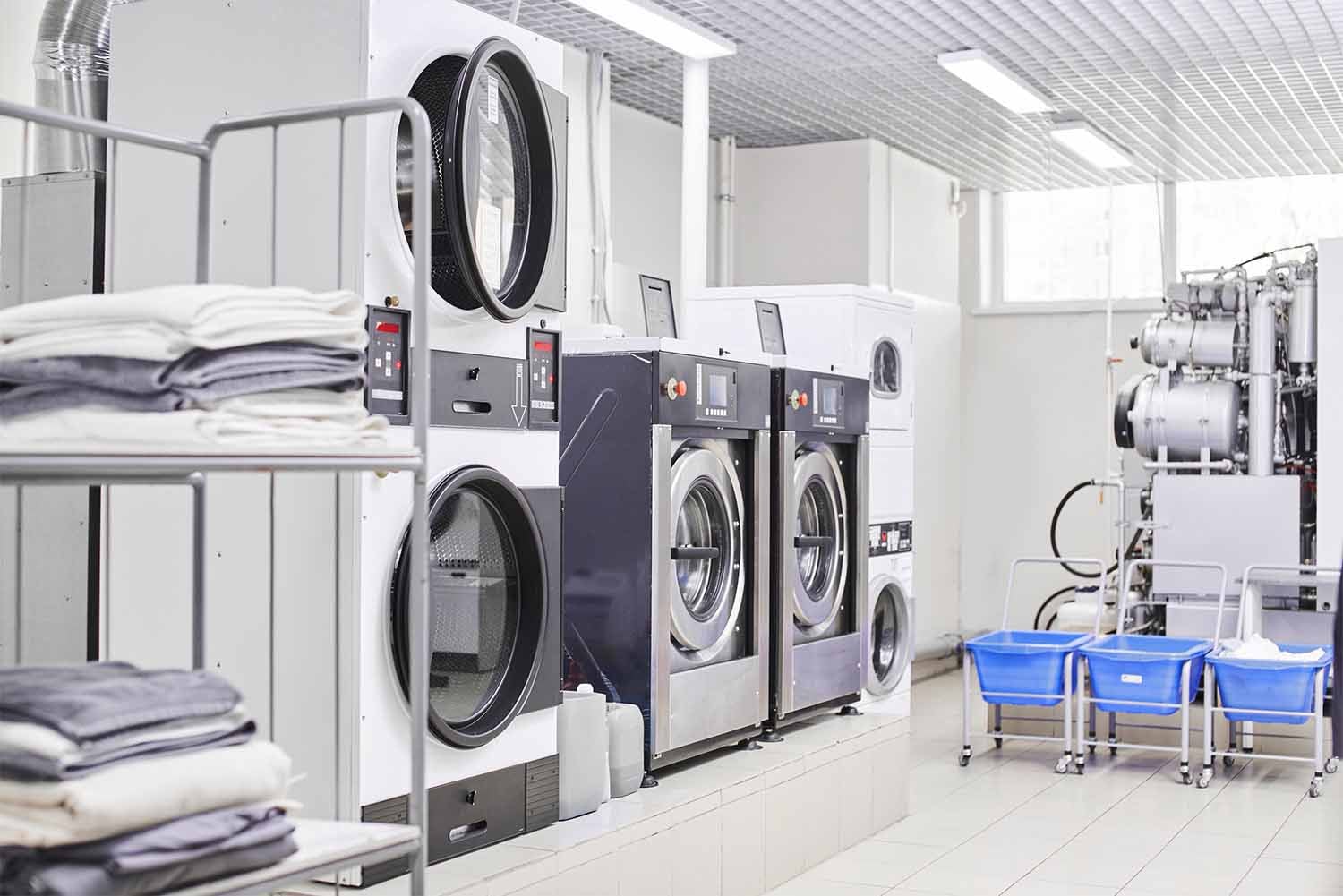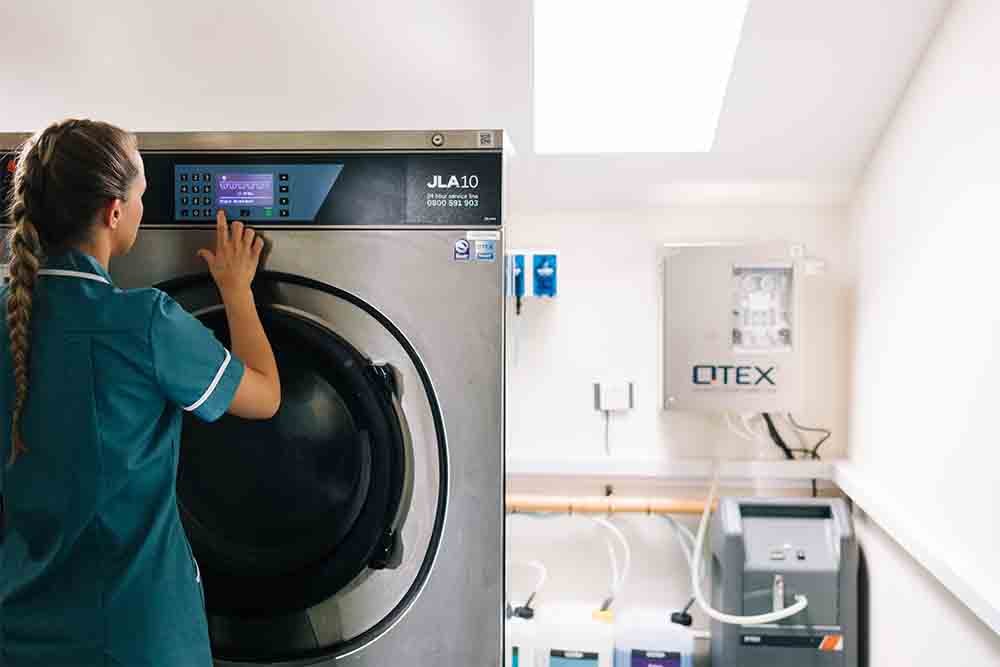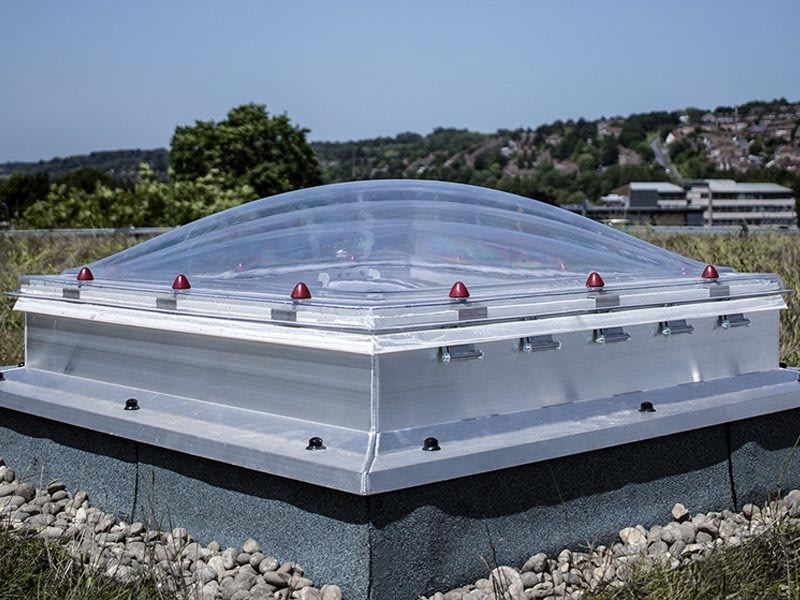More and more hospitals, healthcare and the food industry are switching to microfibre cleaning cloths and mop pads as the focus on infection control increases. It’s a significant investment, and should be encouraged, but without the right approach to maintenance, that investment could be wiped out quickly.
Traditional microfibre laundering – thermal disinfection
Microfibre suppliers generally recommend that a wash temperature of between 60°C and 95°C is needed to launder their products after each use. Due to the high effectiveness of microfibre in picking up micro-organisms from surfaces, it should always be considered as ‘infected linen’ and therefore thermal disinfection is an effective means of decontamination – whether processing laundry in-house or outsource it to a third party.
Wherever it is laundered though, thermal disinfection should not be seen as the only go-to solution to decontamination. Disinfection cannot be guaranteed (spore-forming such as C. Difficile and some heat resistant bacteria E. Coli for example, cannot be fully eradicated using this method).
As for the impact, too much heat during laundering can destroy microfibres – leading to repeat investments or simply making do with damaged mops or cloths. Microfibres are essentially plastics, blends of polyamide and polyester; heat is not good news for plastics and can reduce their effectiveness. Shrinkage occurs, with fibres becoming damaged and twisted, trapping bacteria and reducing the effectiveness of the decontamination process and ongoing performance of the material.
The future of microfibre laundry – low temperature ozone disinfection
In contrast to traditional thermal processes, low temperature ozone laundering offers the dual benefit of being tough on bacteria while being gentle on fibres. In a peer reviewed report published in the Journal of Infection Prevention_ in 2012 by P.N. Humphreys et al at Huddersfield University stated “The data supports the position that JLA’s OTEX system is an effective approach for the re-cycling of Microfibre cloths without any detrimental impacts on MF performance up to 350 OTEX cycles”._x000D_
After considerable development work a unique wash process was developed and trialed with the support of the NHS and ISS Mediclean at the QE2 Hospital, Welwyn Garden City. After microbiological analysis of mops and cloths over a six month period, no pathogenic bacteria was found to be present in any of the post wash mops and cloths, demonstrating an extremely effective disinfection process even in cold water. As there is no need for hot water both water and electricity is reduced significantly. The energy to heat to thermal temperatures and provide the necessary hold time is also not required. As such, ozone decreases the overall carbon footprint of the wash process and maintains the integrity of the microfibre.
“Technology’s role in professional cleaning should not be underestimated. Even though more managers are indeed turning to microfibre, there’s a danger that they might overlook the decontamination process needed to ensure hygienic laundering.
Since the main route for outbreaks of E.Coli, C.Difficile, Norovirus, MRSA and other infections is hand-to-mouth, it clearly becomes a problem if surfaces are being cleaned by unclean cloths and mops. This can be made worse through the transmission of germs from the cleaner’s hand onto clean surfaces or materials after they have handled inadequately laundered items.”
Jackie Hook, Technical Support Chemist at JLA
The latest study for OTEX has taken place with De Montfort University, and following in depth testing, it has been proven that the OTEX laundry system removes all traces of Coronavirus. For any site where infection control is vital, understanding that microfibres, as well as textiles such as bedding, linen and even uniforms can be washed using a low temperature yet completely removes all traces of the virus is a reassurance more important than ever.
You can download a copy of our full microfibre laundry ‘Talking Point’ below, with more on how ozone laundry can help your green credentials, as well as your compliance responsibilities.
- 8 mins
Using Ozone To Wash Microfibre Mops & Cloths
In contrast to traditional thermal processes, low temperature ozone laundering offers the dual benefit of being tough on bacteria while being gentle on fibres.
Download our FREE Talking Point to read more about why O3 washing represents the future of disinfection when it comes to achieving the highest standards of hygiene in healthcare settings.














